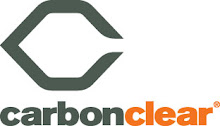
The full version of this article appeared in the March 2008 (No. 55) issue of The Environmentalist.
In our last article, we discussed how ISO 14064 provides useful guidance when choosing the boundaries for a corporation’s or organisation’s carbon footprint. In particular, while ISO 14064 only requires that companies include their direct emissions and their emissions from purchased energy, we argued that a more thoroughly prepared footprint will also look at the indirect emissions from the supply chain.
In this article, we explore how supply chain decisions can affect the company carbon footprint. We also look at how outsourcing production to other countries, while justifiable on cost or quality grounds, can have a significant effect on emissions – both negative and positive.
The “Low-Carbon” Service Sector
The UK economy has steadily shifted away from manufacturing and mining to a service economy underpinned by financial and retail-related services. Services, which are responsible for approximately 74% of national output, tend to be less energy intensive than agriculture, mining and manufacturing.
Defra reports that direct UK greenhouse gas emissions have fallen 12.6 percent since 1990, largely as a result of more efficient energy use, a switch away from coal-fired electricity, and the shift to a service-based economy.

However, the total volume of manufactured goods consumed in the UK has not decreased. In most cases, manufacturers have shifted to outsourced production. In the process they have transferred their – and the country’s – emissions to the international supply chain. For large retailers, the supply chain may generate thirty times the company's own emissions. A similar effect may hold at the national level.
Outsourced Emissions
There are three ways that including the outsourced supply chain can increase a company’s carbon footprint:
- an activity that had been excluded from direct emissions once outsourcing began must now be reincorporated into the emissions total;
- transport between the point of manufacture and UK distribution and retail points results in additional emissions that must be included;
- many countries that have become a hub for outsourced manufacturing emit more carbon per unit of electricity than the United Kingdom.
The last point bears further exploration. According to the International Energy Agency, the average kilowatt-hour (kWh) of electricity in the UK resulted in 472 grams of CO2 emissions in 2004. In the United States, one kWh resulted in 576 grams of CO2. However, in China, each kilowatt- hour resulted in 851 grams of CO2 emissions, and in India the figure was 942 grams. All else being equal, then, outsourced manufacturing can lead to a significantly higher corporate carbon footprint.
On the other hand, all else may not be equal. Lower labour costs in developing countries mean that companies may use less energy-intensive manufacturing techniques, leading to a net reduction in CO2 emissions. In the end, every company and production process requires its own analysis to determine how outsourcing affects the carbon impact of the supply chain.
Measuring Embodied Carbon
The British Standards Institute, working in collaboration with the Carbon Trust and other stakeholders, has developed a draft standard for measuring supply chain emissions. The draft standard is PAS 2050 - Specification for the measurement of the embodied greenhouse gas emissions in products and services.
In order to ensure that different products and services are evaluated consistently, PAS 2050 takes a comprehensive approach to measuring emissions, including, in the words of the document author, “all emissions (or portion of emissions) that are released as part of all processes involved in creating modifying, transporting, sorting, disposing of and/or recycling the product.”
This comprehensive approach requires companies to address their supply chains. For example, a producer of chocolate candy bars would have to include emissions from growing cocoa overseas – including irrigation and fertilisers, transporting the raw cocoa beans to the mill, producing the milk, blending the chocolate, producing the packaging, warehousing and distribution. With major retailers like Tesco pledging to include carbon labelling on all their products, we predict that more and more companies will be working with their supply chain to understand their carbon exposure.
Outsourced Emission Reductions
Outsourcing is not merely an added source of greenhouse gas emissions that companies must add to their corporate carbon footprint. Outsourcing is also a widely accepted way for companies to achieve substantial emission reductions.
Under the EU Emission Trading Scheme (ETS), companies that are not able to meet their binding greenhouse gas emission targets must purchase external reductions in the form of carbon credits – typically classified as European Union Allowances (EUAs) or Certified Emission Reductions (CERs).
Companies that have voluntarily committed to reducing their corporate emissions or making a product or service “carbon neutral” have access to a wider range of external reduction options to accompany their internal reduction measures. In addition to CERs and – less commonly in the voluntary market – EUAs, companies may choose balance out their unavoidable emissions with so-called voluntary emission reductions (VERs). A number of standards have been developed to increase transparency in the voluntary market and ensure that outsourced emission reductions are as environmentally effective as internal reductions.
Conclusion
Companies choose to outsource business processes for a wide variety of reasons: proximity to markets, raw material prices, labour costs, a desire to encourage job creation in poorer countries, access to technical expertise, regulatory and tax regimes, and others. In this article, we have argued that carbon impacts should be an important consideration when managers decide whether and how much to outsource.
Because outsourcing can lower as well as increase a company’s carbon footprint, and because the results can be counter-intuitive, managers may need to undertake a detailed analysis of their supply chain when weighing the carbon cost of outsourcing.
Suzy Hodgson, AIEMA, is a principal consultant and Jamal Gore, AIEMA is the managing director at specialist carbon management company, Carbon Clear Limited.

